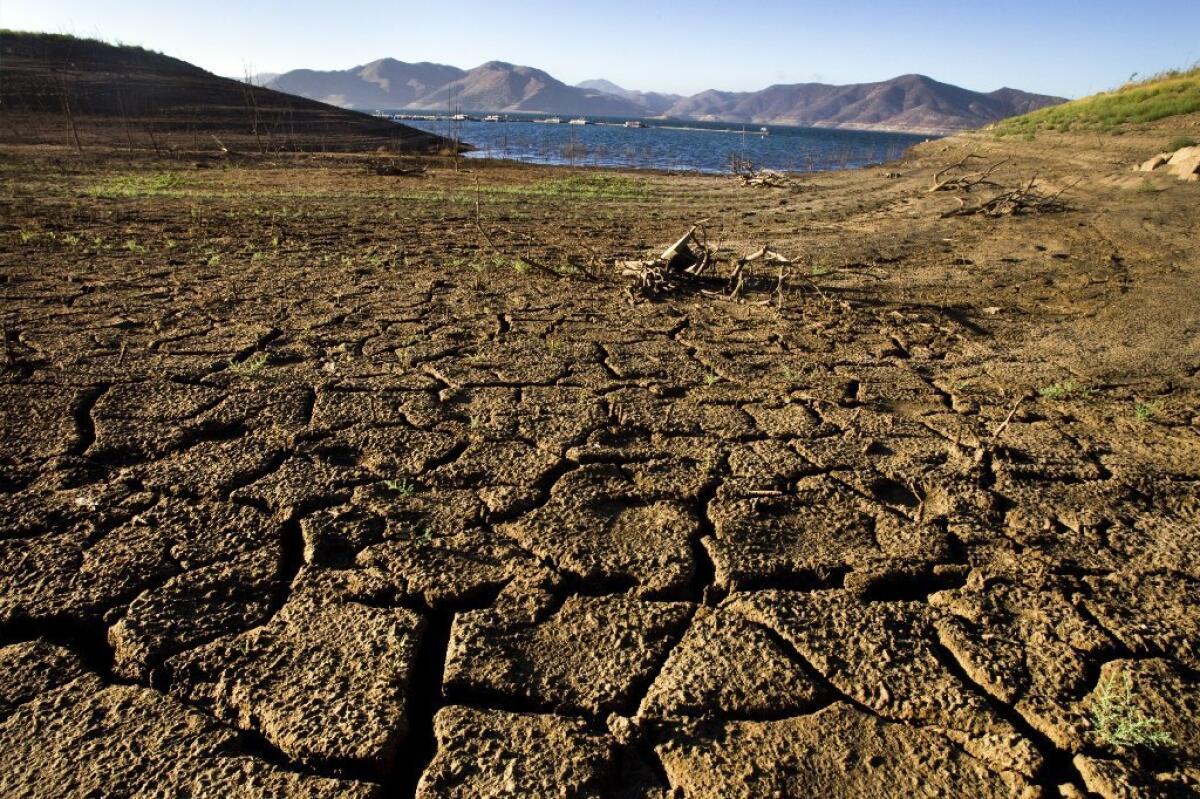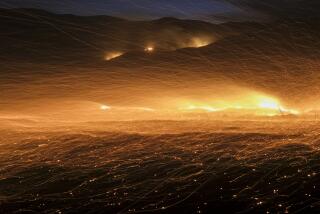Scientists explain how climate change helps fuel California drought

Climate change is increasing the risk of severe drought in California by causing warm periods and dry periods to overlap more often, according to a new study.
Rising temperatures resulting from increased greenhouse gas emissions mean warm and dry periods are coinciding more frequently, the study authors say. And that is amplifying the effects of low precipitation.
“The key for drought stress is not just how much precipitation there is,” said Noah Diffenbaugh, the paper’s lead author and an associate professor at Stanford University’s School of Earth, Energy and Environmental Sciences. “Temperature is an important influence on the water available in California.”
Higher temperatures decrease soil moisture, increase evaporation and intensify California’s annual dry season. All of these accentuate the impacts of below-normal precipitation.
So Diffenbaugh and two other Stanford researchers analyzed historical climate data for the state to see when warm years coincided with dry years. They found that warm-dry years have occurred more than twice as often in the last two decades than they did in the preceding century.
And it appears that the situation is set to get worse. A continuing rise in global temperatures — fueled in part by human activity — will greatly increase the chances that dry periods are accompanied by warm conditions, the team predicted. That’s what has happened during the state’s current drought, now entering its fourth year and by some measures the worst on record.
“Our results highlight the fact that efforts to understand drought without examining the role of temperature miss a critical contributor to drought risk,” wrote the authors, whose work was published Monday in the Proceedings of the National Academy of Sciences.
Whether climate change – whatever its cause – has played a role in the California drought is a matter of debate. A report published last fall by the Bulletin of the American Meteorological Society concluded that there is no definitive link.
That report included the work of 20 research teams that explored the causes of 16 extreme weather events recorded around the world in 2013. Diffenbaugh and Stanford graduate student Daniel Swain, a co-author of the PNAS study, contributed a paper that said the type of stubborn high-pressure system that persistently pushed storms north of the state is more likely to occur with climate change, suggesting a link to global warming.
But other scientists who contributed to the meteorological society report disagreed, attributing the drought to natural variability. They wrote there was “no appreciable long-term change in the risk for dry climate extremes over California since the late 19th century.”
In the PNAS study, Diffenbaugh, Swain and Stanford graduate student Danielle Touma note that California’s average precipitation has not appreciably declined over the last century. Indeed, climate models suggest that winter precipitation in much of the state could modestly increase this century.
But rising temperatures caused by human activities are nonetheless increasing drought risk, they wrote.
“The emergence of a condition in which there is ~100% probability of an extremely warm year substantially increases the risk of prolonged drought conditions in the region,” they concluded. “Our results strongly suggest that global warming is already increasing the probability of conditions that have historically created high-impact drought in California.”
Follow me on Twitter @boxall and “like” Los Angeles Times Science & Health on Facebook.







